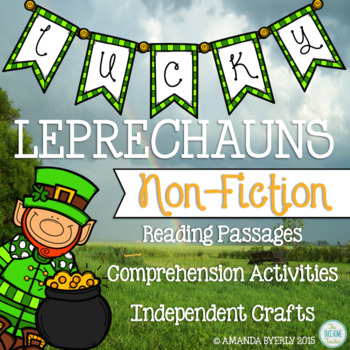Lucky Leprechauns St. Patrick's Day Non-Fiction Reading
- PDF
Description
Don't let students' non-fiction comprehension be left up to "luck".
Celebrate St. Patrick's Day with 33 pages of informational passages, reading comprehension checks, cute crafts, and lots of TEXT STRUCTURE practice.
6 non-fiction reading passages/sheets with corresponding comprehension pages.
Get Me Gold pot of gold craft - fill our pot with fun facts found in the passages. Add the rainbow to connect your pot of gold to the Comprehension Cloud craft- answer the who, what, when, where, why, how (description).
"Luck" me in the face Leprechaun craft - cut, color, and assemble the leprechaun's head so he can watch over for his treasure (pot of gold).
Flag of Facts activity - use one of the 5 graphic organizers (text structures: sequence of events, description, compare & contrast, cause & effect, problem & solution) to organize the information read and then write an informative piece on the writing template provided.





